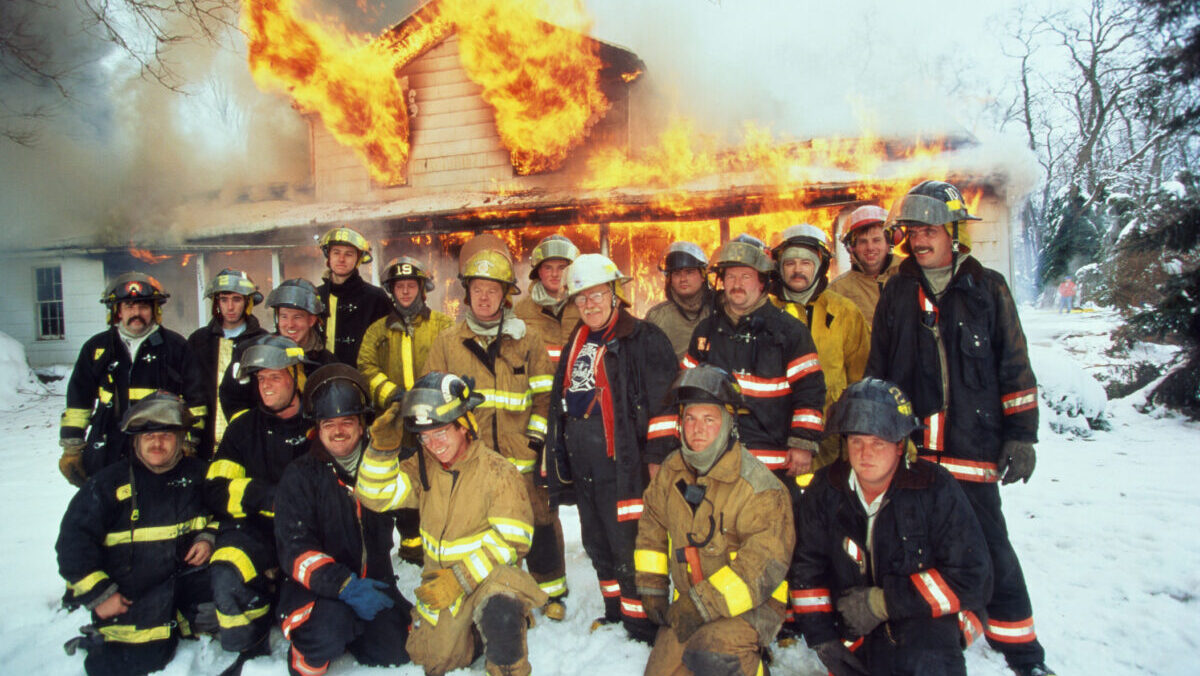Iron ore has had a volatile week, tumbling below US$100/t for the first time in months on Monday before threatening US$110/t by the end of the week
ANZ says prices are likely to find support between US$90-110/t
While marginal current or prospective producers may be nervous at those levels, the big dogs will be sitting on healthy enough profits to keep dividends strong
ANZ’s commodity strategists Daniel Hynes and Soni Kumari say iron ore should trade between US$90-110/t for the remainder of 2024, levels that would keep iron ore profits relatively safe even as China’s real estate sector continues to stumble.
They say there’s no solution on the horizon for China’s property issues, expecting steel demand from its real estate sector to continue falling this year.
That’s a big deal since Chinese demand sets iron ore prices. It controls almost 60% of the 1.8Btpa crude steel market and consumes around four-fifths of the seaborne iron ore trade.
But other sectors of the economy will come to the rescue, and Hynes and Kumari also think expensive Chinese magnetite producers will continue to set the marginal cost line.
“Investment in social housing should increase. Infrastructure investment remains strong, bolstered by government efforts to build out the country’s renewable energy sector,” they said.
“China’s automotive industry, the largest in the world, will receive further supportive measures, with particular focus on the electric vehicle (EV) market. The manufacturing, machinery and shipping industries are also seeing growth.
“Together, these areas of growth should lift China’s steel consumption by 0.5% in 2024.
“Combined with low supply growth, the iron ore market should be relatively balanced. With a large portion of Chinese domestic supply produced at costs higher than USD100/t, we see the current price as a floor. Ultimately, we expect iron ore to trade in a USD90–110/t range for the remainder of the year.”
Iron ore briefly dipped below US$100/t early last week before rebounding sharply to as much as US$109/t before Singapore futures fell 2.9% to US$106.60/t on Friday afternoon.
How will this impact the ASX’s big players?
With prices around current levels there may be some iron ore companies in a spot of bother, though that only includes those with extremely high cost structures.
The majors BHP (ASX:BHP), Rio Tinto (ASX:RIO) and Fortescue (ASX:FMG) all produce their main hematite DSO products for around US$20/t.
That means even with grade discounts they’re well ahead, issuing strong dividends.
Rio paid out 60% of its earnings for the last financial year to shareholders, with FMG paying 65% and BHP 69% at their half year results. In dollar terms it came in at a combined splash of $15.2b, enough to buy investors 21 controversial Tasmanian football stadiums.
The biggest threat to payouts at current price levels will come from decarbonisation and capex spend as well as divisions external to iron ore.
Think FMG’s green energy business, BHP’s lossmaking nickel assets and Rio’s aluminium segment.
As a benchmark, FMG was paying at the top of its 50-80% range when its dividends peaked with iron ore prices in FY21.
Average iron ore prices received by miners last year weren’t too far off current levels. Rio reported an average FOB Platts 62% fe index of US$110.3/t in 2023. Its own product realised US$99.7/wmt FOB, equal to US$108.4/dmt once a moisture content of 8% is factored in.
At the smaller end of the spectrum, Fenix Resources (ASX:FEX) had C1 costs of US$50/wmt in the December half and generated strong margins due to hedges and grade premiums.
Mineral Resources (ASX:MIN) expects its Yilgarn and Utah Point hubs to produce at an equivalent top end of US$70/wmt and US$50/wmt respectively, but expects to begin exports from the 35Mtpa Onslow hub by June, which will operate at lower cost levels of around US$21/t once fully ramped.
Mt Gibson Iron (ASX:MGX), which also gets grade premiums from its Koolan Island mine, has costs in the US$45/t range. Tassie miner Grange Resources (ASX:GRR) is sitting higher at around US$85/t and has a longer haulage route than WA producers, but achieves the strongest premiums of the listed Aussie producers for its magnetite pellets and concentrate.
Champion Iron (ASX:CIA), which has doubled the capacity of its Bloom Lake mine in Canada to 15Mtpa and wants to convert at least half its production to an ultra-premium DR grade 69% Fe product, has higher costs than the Pilbara cohort at around US$60/t but would sit on stronger margins once it completes the US$350m project with Goldman Sachs analysts estimating a US$75/t premium for the top of the range iron ore.
DR pellets have averaged premiums of US$70/t in the past three years, though weak steel mill margins have hurt that advantage as factories trim costs by shifting to lower grades.
Around 50% of its current sales are to China at US$25-30/t freight rates, well above their Pilbara counterparts, though it could save US$5-8/t according to GS’ Paul Young and Caleb Heiner by selling to DR plants in the Middle East and Europe where low carbon steel technologies are grabbing a larger market share.
Could iron ore go even lower?
There remain downside risks, Hynes and Kumari caution.
“China’s efforts to cut emissions may put pressure on heavy industry. China’s steel industry produces 18% of the country’s carbon emissions, so we expect it to continue increasing its use of electric arc furnaces for production. This process uses significantly less energy. However, the use of steel scrap means subsequently less demand for iron ore,” they said.
“This process won’t have a dramatic impact on emissions in the short term. Ultimately output curbs will be required to meet the emissions targets under the current five-year plan. This could significantly impact demand for iron ore, with prices likely to pressure the lower end of our expected trading range should the output curbs be substantial.”
That sort of policy, normally carried out unofficially via local directives, never really came to bear last year, pushing prices up to super high levels of more than US$140/t in December.
ANZ sees the Chinese real estate sector’s steel consumption crumbling by 4% to 270Mt in 2024, with the 3.6 year timeframe to offload every unpurchased property in the country over 1.5x the 2.3 year peak from the start of the 2014-2015 downturn.
But they’re bullish price support will come from infrastructure and non-traditional sources like electric vehicles, showing the new energy boom is not just a lithium story.
“Steel consumption from government-backed infrastructure projects will continue to grow but at a slower pace, due to local government deleveraging following the NPC’s work report’s requirement for them to address debt levels,” Hynes and Kumari said.
“However, broader investment in the infrastructure sector is more than offsetting that slowdown. We expect steel demand from the energy sector to grow 8–10% in 2024.”
The auto sector accounts for around 10% of Chinese steel consumption, with 900kg in each new vehicle on average.
“Beijing has pledged to boost domestic spending on EVs via trade-in programs and the revision of local policies that restrict the purchase of cars,” Hynes and Kumari said.
“Advanced high-strength steel has become an important part of EV construction. New steel grades have high strength-to-weight ratios, making them ideal for applications such as battery enclosures. Other materials, such as aluminium, may be lighter but don’t offer the same strength and durability. The main components of a vehicle’s structure are often made from steel.
“Chinese car makers produced 30.16m units last year (up 11.6% y/y), breaking the previous record of 29m units in 2017. The rapid expansion of the EV sector is likely to keep that growth high. After a period of weakness in mid-2023, passenger car sales in China grew in the last three months of the year. All up, we remain positive about China’s automotive sector and expect to see steel demand growth from this sector in double digits.”
Supply growth is expected to be muted, with just 1% growth in seaborne exports expected in 2024, though future years could see a big lift in supply from Africa where Rio and its Chinese JV partners expect to open Guinea’s up-to-120Mtpa Simandou mines by the end of next year.
READ: Tens of billions of tonnes: Why Dave Flanagan thinks Guinea will be the next Pilbara
ANZ’s analysis for price support levels roughly measures up with BHP’s chief economist Huw McKay, who has said in multiple recent economic updates that increased supply from marginal swing producers has shifted cost support up to US$80-100/t.
READ: Bulk Buys: Here’s why BHP is confident US$100/t is the right price for iron ore
Iron ore miners share prices today:
The post China’s housing market is burning to a crisp but these iron ore price forecasts would have mining giants smiling appeared first on Stockhead.






















